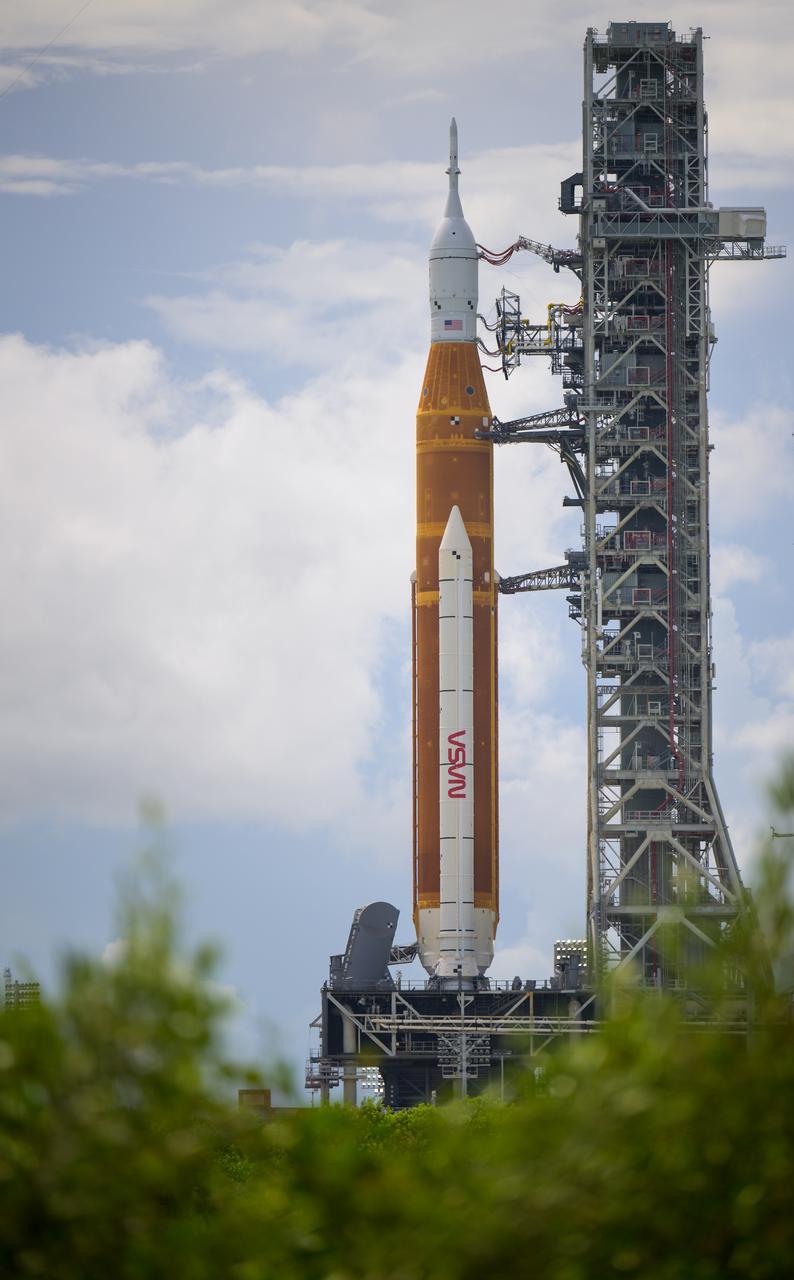
CAPE CANAVERAL—NASA managers for the Artemis I flight test of the Space Launch System (SLS) rocket and Orion deep-space capsule cleared the Kennedy Space Center Launch Team to proceed with filling the two-stage superheavy-lift booster with liquid oxygen and liquid hydrogen for a launch attempt at 8:33 a.m. EDT on Aug. 29.
The launch weather outlook was 80% favorable as NASA began the nearly 4 hr. process of loading the SLS core stage with 196,000 gallons of liquid oxygen, cooled to -297F, and 537,000 gal. of liquid hydrogen, cooled to -423F.
As fueling of the core stage winds down, propellant loading of the Interim Cryogenic Propulsion Upper Stage (ICPS), powered by a single Aerojet Rocketdyne RL10 engine, is to follow.
NASA has until 10:33 a.m. EDT for a launch attempt on Aug. 29, although the weather outlook was forecast to diminish to 60% favorable later in the window, with an increasing prospect for clouds, lightning or rain that could force a scrub.
Fifteen minutes prior to liftoff, with the countdown in a 30-min. hold, NASA Launch Director Charlie Blackwell-Thompson will conduct a “go/no-go” poll of her team about whether to proceed with launch.
During the final phase of the countdown, the launch team will attempt for the first time to thermally condition the core stage's four Aerojet Rocketdyne RS-25 engines with a bleed off of liquid hydrogen, a technique that could not be practiced during the last wet dress rehearsal on June 20 due to a leak in the bleed line.
With a successful liftoff, twin solid rocket boosters mounted to the core stage are to separate at the 2 min.,12 sec. mark. The core stage will continue to thrust until the 8 min. 4 sec. point, followed by separation from the ICPS and Orion about 14 sec. later.
Next, the Orion solar arrays will begin a 12-min. deployment, followed by the all-important 18-min. Translunar Injection ICPS burn 1 hr. 38 min. after liftoff.
Orion is to separate from the ICPS at the 2 hr. 6 min. 10 sec. mark to begin a planned 42-day test flight in distant retrograde lunar orbit that reaches as far as 42,000 mi. from Earth.





